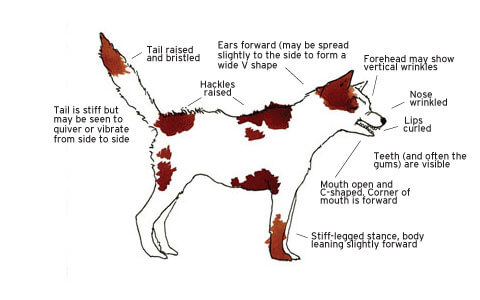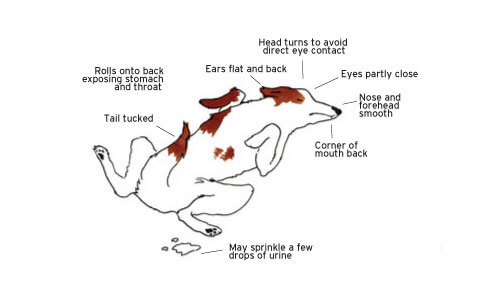How To Read Dog Body Language

Dog body language involves a series of unique methods for communicating emotions and intentions. It can be quite different from how humans communicate.
For us humans, it can sometimes be difficult to tell exactly what your dog is saying. However, your dog communicates better than you think-you just need to watch them. A dogs body language can speak volume about what they're thinking, feeling and trying to say. A lot of canine communication consists of barks, whines, and growls, so it's important to know what dog sounds mean. More often, though, dogs rely on nonverbal body language. That can lead to plenty of human-dog misunderstandings. Sometimes, dog body language is simply unfamiliar. At other times, it's in direct contrast with what that same signal means to a human, such as with yawning or looking away. To better communicate with your canine companion, let's learn some more tips on reading dog body language.
Relaxed and Approachable

This dog is relaxed and reasonably content. Such a dog is unconcerned and unthreatened by any activities going on in his immediate environment and is usually approachable. The overall body posture will be soft and wiggly. Regardless, approach new dogs with caution and don't attempt to rush a dog into a greeting, even if they seem relaxed.
Alert-Checking Things Out

If the dog has detected something of interest, or something unknown, these signals communicate that he is now alert and paying attention while he is assessing the situation to determine if there is any threat or if any action should be taken. The dogs overall posture is distributed evenly between the four feet in a "ready" position as they determine their next steps.
Dominant and Aggressive

This is a very dominant and confident animal. He's showing some warning signs like stiff body posture, teeth baring and changing from avoiding eye contact to making direct eye contact. Here he is not only expressing his social dominance, but is also threatening that he will act aggressively if he is challenged. Knowing whether your dog is dominant or submissive can help your relationship with your dog, and also be more aware of how other dogs around you may act.
Stressed and Distressed

This dog is under either social or environmental stress. These signals, however, are a general "broadcast" of his state of mind and are not being specifically addressed to any other individual. Stressed dogs often avoid eye contact and look at the trigger, the quickly look away. A distressed dog might perform exaggerated yawns, sneeze or lick their lips frequently. They might also shake their bodies as if their coat is wet.
Fearful and Worried

This dog is somewhat fearful and is offering signs of submission. These signals are designed to pacify the individual who is of higher social status or whom the dog sees as potentially threatening, in order to avoid any further challenges and prevent conflict. If your dog is always showing these symptoms, he may not feel comfortable in his environment and you may need to try a few extra tips to make your anxious dog feel relaxed.
Extreme Fear-Total Submission

This dog is indicating total surrender and submission. He is trying to say to another dog, "Hey, I'm not a threat and i mean no harm." Often, dog's will roll over onto their back to expose their abdomen. Submissive behavior is also displayed by a low-hanging tail and lowered head. A dog may also avoid eye contact.
Playfulness

Here we have the basic invitation to play. It may be accompanied by excited barking or playful attacks and retreats. A playful pup wags it's tail in arousement, drops elbows to the floor and keeps hips raised. Their delicate ears are perched forward and mouth is relaxed. This set of signals may be used as a sort of "punctuation mark" to indicate that any previous rough behavior was not meant as a threat or challenge.

These guidelines are a general overview of dog body language, and the signals and their meanings can vary between breeds. When in doubt, accept the most fearful or aggressive signal a dog is showing you. If the tail is wagging, but the dog is grimacing and looks tense, assume the most dangerous end is telling the truth. Your goal is to observe the entire dog, and the situation and context the animal is in, and do your best to accurately determine what the dog is trying to say. With time and education, you’ll soon speak another language — with man’s best friend!

